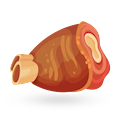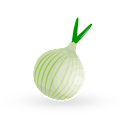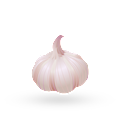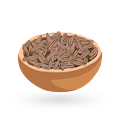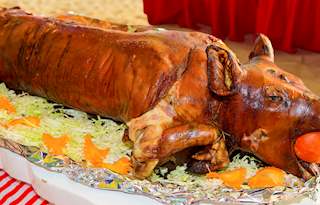Schweinshaxe
(Schweinshaxn, Sauhax, Sauhaxn, Hachse, Haxe, Haxn, Knöchla, Hechse, Hämmchen)
The term Schweinshaxe is typically used in the southern parts of Germany, predominantly in Bavaria, and it usually refers to a whole pork knuckle that is roasted for hours until it is thoroughly cooked and the skin becomes golden brown and crispy. Pork knuckles are a staple in traditional German cuisine, and they come with various names such as hachse, haxe, haxn, knöchla, hechse, hämmchen, and bötel, mainly depending on the region and a slightly different preparation process.
Eisbein is the northern version of the dish that is typically cured or pickled and then boiled. Though it is commonly found in restaurants throughout the country and the region, Schweinshaxe is a quintessential dish at the popular folk festival Oktoberfest.
The knuckle is almost always served whole, and it's usually accompanied by sauerkraut, braised cabbage, roasted potatoes, or potato dumplings. Similar dishes are found in other European countries, such as pečené vepřové koleno in the Czech Republic.
Pairing tips
Dubbel
Dubbel is a rich and well-balanced Trappist beer that originated in Belgium and whose modern version is often associated with Henrik Verlinden who created ... Read more
Schwarzbier
Schwarzbier is a German dark lager style. These beers are not overly powerful or harsh, and they tend to be smooth and refreshing. The use of malted barley will ... Read more
Dunkel
Dunkel is a German dark lager that is mostly associated with Bavaria and Munich. This dark beer, which can range from copper to dark brown, is mainly brewed from ... Read more
Helles
Helles is a German-style lager that first appeared in Munich in 1894. It was a Bavarian answer to light Czech pilsner. Although Bavaria heavily relied ... Read more
Serve with
Rotkohl
Rotkohl is a traditional salad and side dish made from red cabbage that is finely shredded and then braised or slow-cooked with ingredients like apples, onions, vinegar,... Read more
Kartoffelklöße
Kartoffelklöße or kartoffelknödel are traditional German potato dumplings that are consumed all over the country but are especially popular in Bavaria,... Read more
Sauerkraut
Although sauerkraut or sour fermented cabbage is most known as German national food, it has origins in China, when it was made from shredded cabbage that was fermented ... Read more




